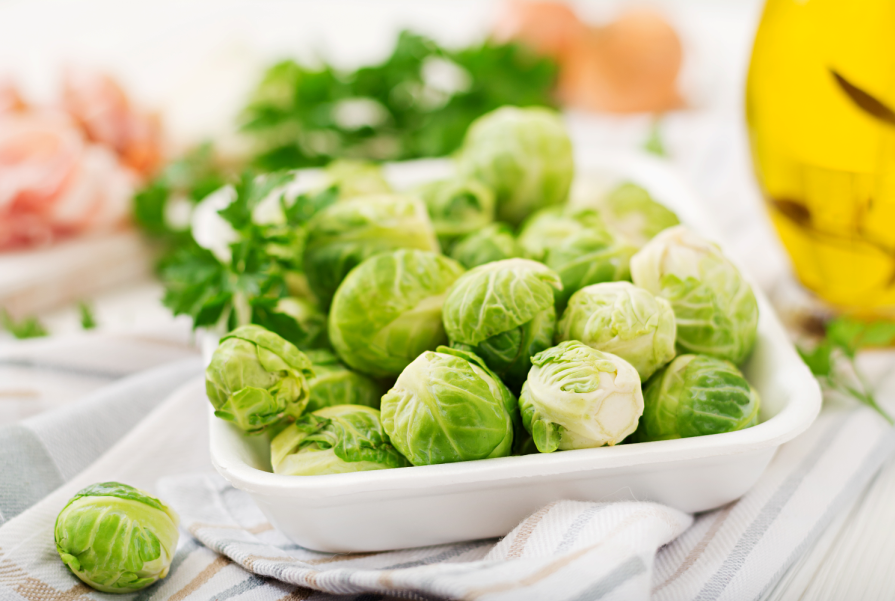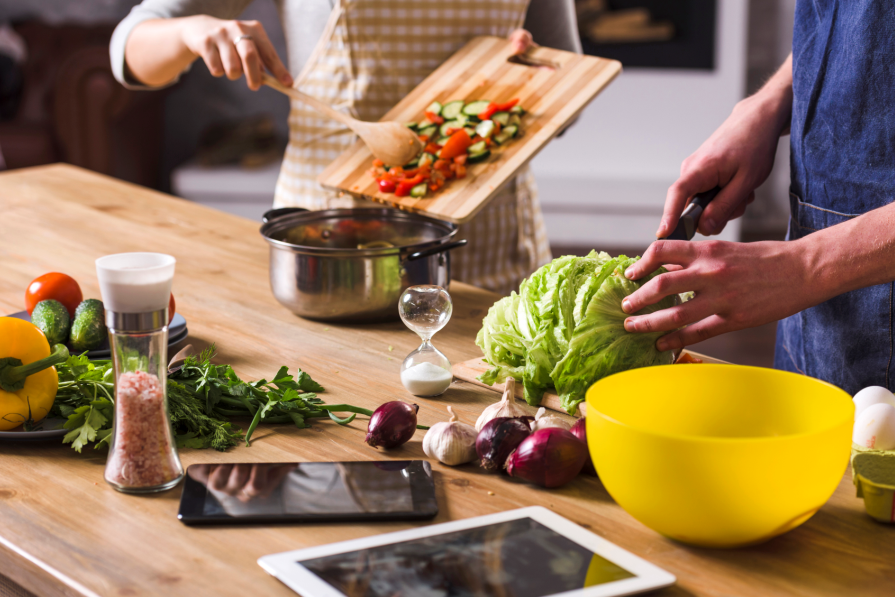
When people talk about living a green lifestyle, they often mention the same green habits. Those with eco-friendly intentions are often told to ride the bus or bike to work, skip using the dryer and grow their own food when they can. While these are great things to do, they take the focus away from the simple changes you can make in your everyday life.
Most people would agree that when they make three meals a day, it leads to plenty of time spent in the kitchen. When was the last time you thought about how your culinary habits affect your carbon footprint?
Check out these five green cooking methods that may surprise you. With a few easy changes, you'll make a bigger dent in your daily carbon footprint than when you skip the straws or plastic water bottles. These small suggestions can really make a big difference in the health of our planet.
Steam Your Food
If you haven't bought yourself a steamer, it's time to think about it. People steam their meals all the time to produce savory foods like vegetables and potatoes. It's a simple way to cook, so anyone can try it out at home.
See if you can find a double- or triple-tiered steamer. You'll cook more food at one time and use less energy since you won't have to turn on the stove, oven or use the microwave multiple times a day for each meal.
Microwave Your Meals
When it's time to heat up your food, it's tempting to throw things like frozen chicken tenders or ready-made meals in the oven and let it cook for a half-hour. It may take some time for the oven to heat up and cool down afterward, but it gives food that authentic, crispy texture you're looking for in a meal.
The next time you prepare lunch, use the microwave instead. You'll cook your food faster and use less energy than your conventional oven. Avoid it unless it's necessary since it sucks up so much power in a short amount of time.

Use an Induction Stove
Stovetops are made to last a long time, so you may not have ever bought one before. Whatever stove came with your house is what you most likely use, but it's time to consider switching yours out for an induction model.
Induction stoves are often confused with electric ones. They both use electricity, but electric stovetops deliver only 70% of their heat to your cookware, whereas induction stovetops deliver 90%. Using all the heat your stove produces prevents energy waste so you don't use more than you need. You can also minimize how much power you use by investing in an induction cooktop, which has only one burner.
Try a Convection Oven
Convection ovens, also known as toaster ovens, are a great replacement for using your oven multiple times every day. When you have smaller meals to prepare or just want to make something for yourself, pull out your convection oven and plug it in over your kitchen counter.
They run on electricity, but because they're a smaller size, they make much less of an environmental impact than traditional ovens. This is a great middle-ground option for people who like how food comes out of an oven. You can still fry fish, which contain essential omega-3 fatty acids , and heat vegetables to crispy perfection.
Buy a Pellet Grill
Grilling is another popular method of cooking that people struggle to give up when they live an eco-friendly lifestyle. Most grills use either coal or gas, but neither is good for the Earth. Burning coal even for the short time it takes to cook burgers burns off carbon dioxide. Methane emissions from coal account for 9% of total U.S. methane emissions, which is a massive amount.
Gas grills hurt the environment by contributing to the CO2 in the Earth's atmosphere. In 2018, CO2 emissions from gasoline equaled 30% of total emissions for the entire U.S.
Switching to a pellet grill will help you cut down on both coal and gas pollution. They run on small wood nuggets made from either waste wood or sawdust. When the chunks burn, they become a carbon-neutral fuel that's safer than either gas or coal.
Think About Your Cooking Habits
What do you cook most often, and what appliances do you use to make those foods? Think about your cooking habits to evaluate where you can make the biggest changes to your daily routine. Put together some meals in a convection oven instead of the full-sized one. Buy a pellet grill for all your barbecue favorites. Whatever you decide to do, you'll help out the Earth while you try something new at the same time.
Written by Jennifer Landis
About the Author
Jennifer Landis is a mom, wife, writer, and blogger at Mindfulness Mama. She’s quite fond of peanut butter, distance running, yoga, and drinking as much tea as possible. Find her on Twitter @ JenniferELandis .
You may also like
How Biking to Work Can Slash Your Environmental Impact
Eco-Friendly City Living: 5 Small Changes With a Big Impact
5 Simple Ways to Significantly Reduce Your Household Water Consumption
Is Plant-Based Eating More Sustainable?
Making Your Home More Sustainable: Our Top Tips
